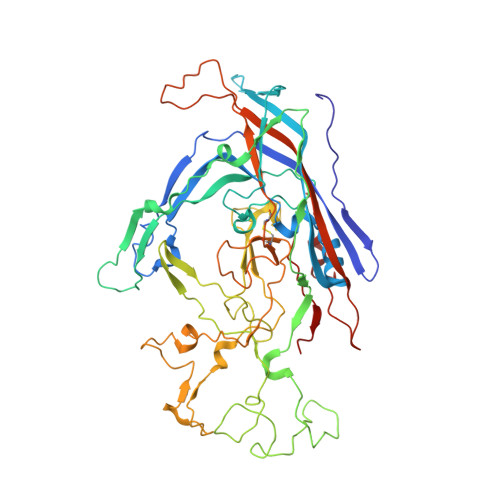Transferrin receptor binds virus capsid with dynamic motion.
Lee, H., Callaway, H.M., Cifuente, J.O., Bator, C.M., Parrish, C.R., Hafenstein, S.L.(2019) Proc Natl Acad Sci U S A 116: 20462-20471
- PubMed: 31548398
- DOI: https://doi.org/10.1073/pnas.1904918116
- Primary Citation of Related Structures:
6OAS - PubMed Abstract:
Canine parvovirus (CPV) is an important pathogen causing severe diseases in dogs, including acute hemorrhagic enteritis, myocarditis, and cerebellar disease. Cross-species transmission of CPV occurs as a result of mutations on the viral capsid surface that alter the species-specific binding to the host receptor, transferrin receptor type-1 (TfR). The interaction between CPV and TfR has been extensively studied, and previous analyses have suggested that the CPV-TfR complex is asymmetric. To enhance the understanding of the underlying molecular mechanisms, we determined the CPV-TfR interaction using cryo-electron microscopy to solve the icosahedral (3.0-Å resolution) and asymmetric (5.0-Å resolution) complex structures. Structural analyses revealed conformational variations of the TfR molecules relative to the binding site, which translated into dynamic molecular interactions between CPV and TfR. The precise footprint of the receptor on the virus capsid was identified, along with the identity of the amino acid residues in the virus-receptor interface. Our "rock-and-roll" model provides an explanation for previous findings and gives insights into species jumping and the variation in host ranges associated with new pandemics in dogs.
Organizational Affiliation:
Huck Institutes of the Life Sciences, The Pennsylvania State University, University Park, PA 16802.














